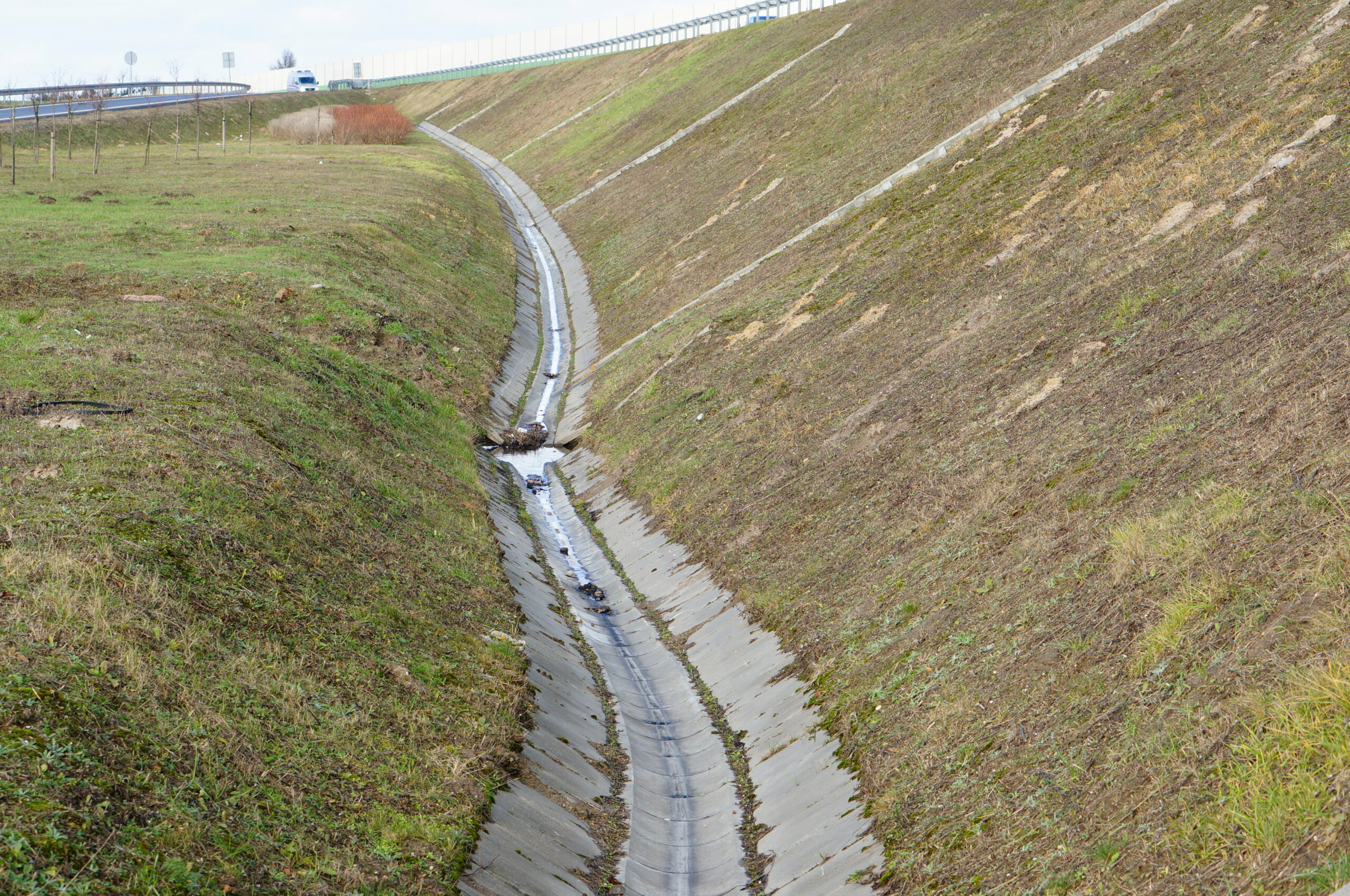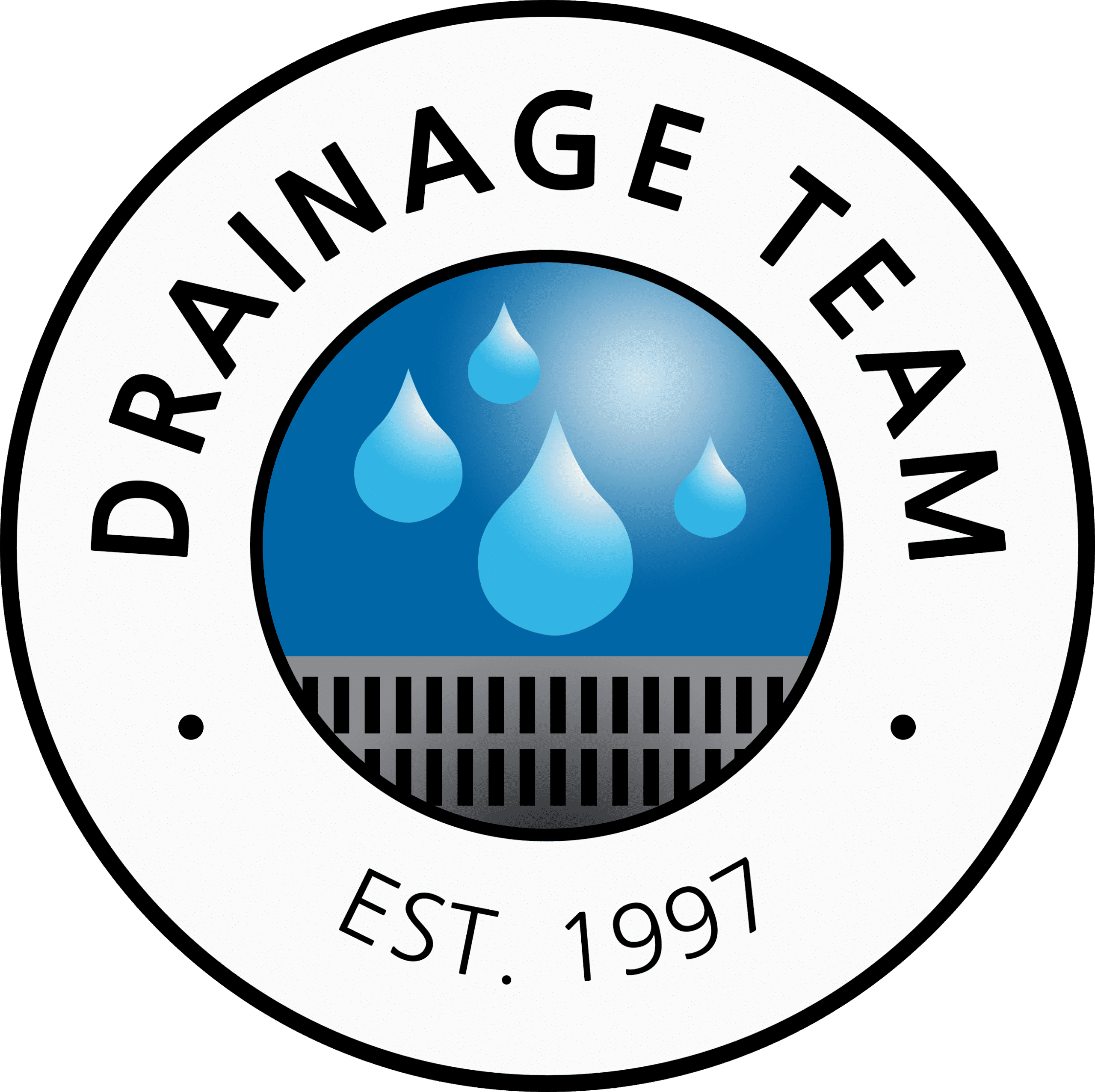Slope stabilization is a critical component in both erosion control and stormwater management, ensuring the long-term success and sustainability of a property’s drainage system. For residential, commercial, and governmental properties, the proper evaluation and management of slopes helps prevent issues such as landslides, flooding, soil erosion, structural damage, and water pollution. With a wide range of available slope stabilization techniques, property owners can select the most suitable method based on their property’s unique characteristics, challenges, and erosion control needs.
Drainage Team specializes in drainage, erosion control, stormwater basins, and waterproofing solutions for a diverse range of properties. We understand the importance of effective slope stabilization in ensuring the success of your stormwater management plan and protecting your property from erosion-related risks and damage. Through this blog post, we aim to educate property owners about various slope stabilization techniques, their benefits, and how these methods can be utilized in a custom stormwater management plan.
In the following sections, we will discuss different slope stabilization methods, highlighting their advantages, applications, and considerations required for successful implementation. By understanding a variety of slope stabilization techniques, you can make an informed decision on the most effective approach for your property’s specific erosion control and stormwater management needs.
1. Vegetative Techniques for Slope Stabilization
One of the most environmentally friendly and cost-effective strategies for slope stabilization is the use of vegetative techniques. These methods leverage the natural ability of plants to reinforce slopes and reduce soil erosion. Some common vegetative techniques include:
– Hydroseeding: A slurry of water, seeds, and mulch is sprayed onto a slope, allowing for quick, even seed germination and growth. This method is particularly effective for large surface areas and slopes with difficult access.
– Erosion control blankets: Biodegradable blankets made from natural materials such as coconut fiber or straw are placed over seeded slopes to hold soil in place, prevent erosion, and provide a stable environment for seed germination and plant growth.
– Live stakes and brush layering: Live stakes are cuttings from woody plants that are driven into the slope, while brush layering involves placing branches horizontally in shallow trenches. Both methods allow plants to take root and establish themselves on the slope, providing reinforcement and erosion control.
2. Structural Techniques for Slope Stabilization
Structural techniques employ various engineered designs and materials to provide support and reinforcement to slopes, preventing erosion and instability. Some common structural techniques include:
– Retaining walls: Built using a range of materials, such as concrete, stone, or timber, retaining walls provide lateral support to slopes by holding back soil and maintaining a stable grade, preventing erosion and slope failure.
– Gabion walls: Constructed from wire mesh baskets filled with large rocks or stones, gabion walls work similarly to retaining walls but allow for more considerable water infiltration, helping to manage stormwater runoff.
– Soil nails and ground anchors: Soil nails or ground anchors are long steel rods or cables embedded into the slope, providing reinforcement and improving slope stability.
3. Geosynthetic Solutions for Slope Stabilization
Geosynthetic materials provide another effective option for slope stabilization, offering reinforcement, drainage, and erosion control benefits. Some commonly used geosynthetic solutions include:
– Geotextiles: Permeable fabrics made from synthetic materials such as polyethylene or polyester, geotextiles can be used for reinforcement, filtration, and drainage purposes, promoting slope stability and erosion control.
– Geogrids: Made from a grid-like pattern of plastic or synthetic materials, geogrids are designed to interlock with and reinforce the soil, increasing its structural stability and reducing erosion.
– Geocells: These three-dimensional honeycomb structures are filled with granular material or topsoil and provide reinforcement, confinement, and erosion control. Geocells are particularly effective on slopes with poor soil quality or where vegetation growth is challenging.
4. Selecting the Right Slope Stabilization Technique
When determining the most suitable slope stabilization method for your property, consider the following factors:
– Soil type and condition: Analyze the soil composition, texture, and drainage characteristics of your property, as these factors will influence the efficacy and durability of various stabilization techniques.
– Slope gradient and length: Consider the degree of the slope and the potential for erosion when selecting the appropriate slope stabilization method. Steeper slopes may require additional reinforcements or a combination of techniques to ensure stability.
– Vegetation and landscape: Take into account the existing vegetation and landscape features of your property when selecting the best slope stabilization technique. Selecting the appropriate vegetation or structural approach can enhance the appearance and health of your property while providing effective erosion control.
– Budget and maintenance requirements: Factor in the initial investment and long-term maintenance needs of each slope stabilization solution, ensuring that the chosen approach aligns with your budget and property management objectives.
Conclusion
Effective slope stabilization is essential for maintaining the integrity of your property, preventing erosion, and minimizing stormwater-related risks. By understanding the various slope stabilization techniques available, you can make informed decisions about the most effective approach for your property’s specific needs and challenges.
Drainage Team can help you determine the right slope stabilization solution for your property and ensure that your stormwater management plan is successful in preventing erosion and mitigating stormwater-related risks. With our expertise in drainage, erosion control, stormwater basins, and waterproofing, we can provide you with tailored and sustainable solutions that align with your property’s unique requirements. Contact us today to learn more about the benefits of slope stabilization and how we can help you protect and improve your property’s stormwater management and erosion control solutions.







